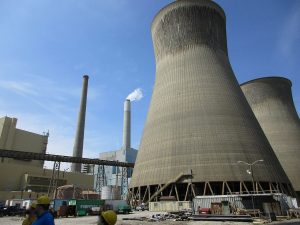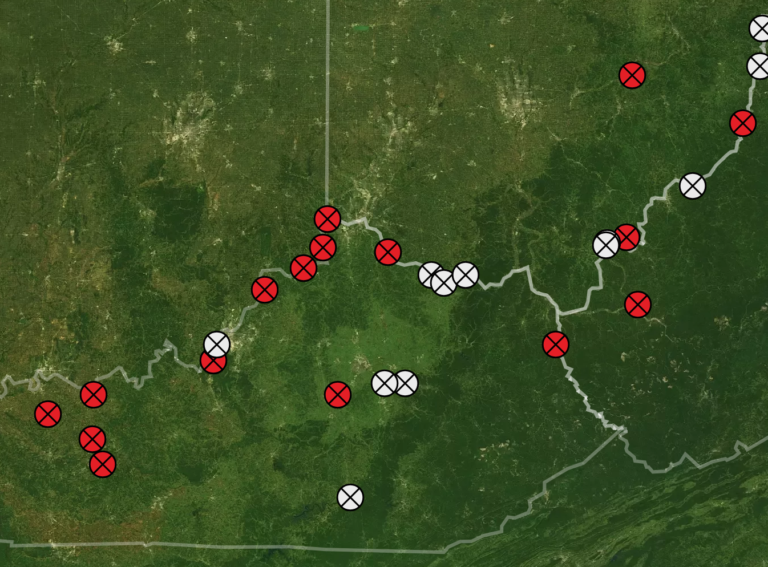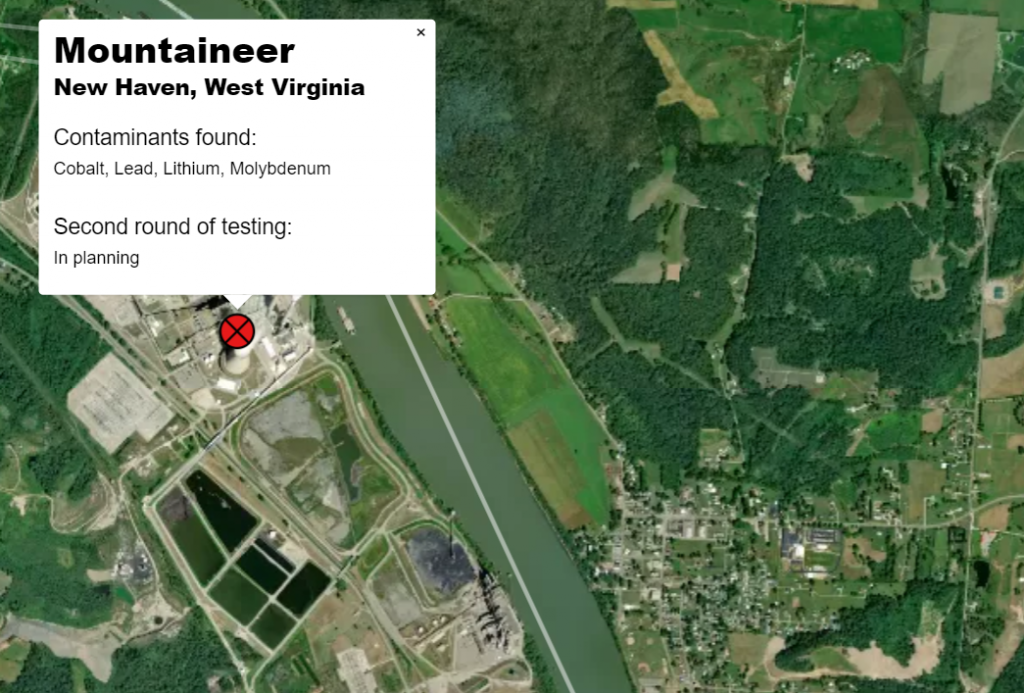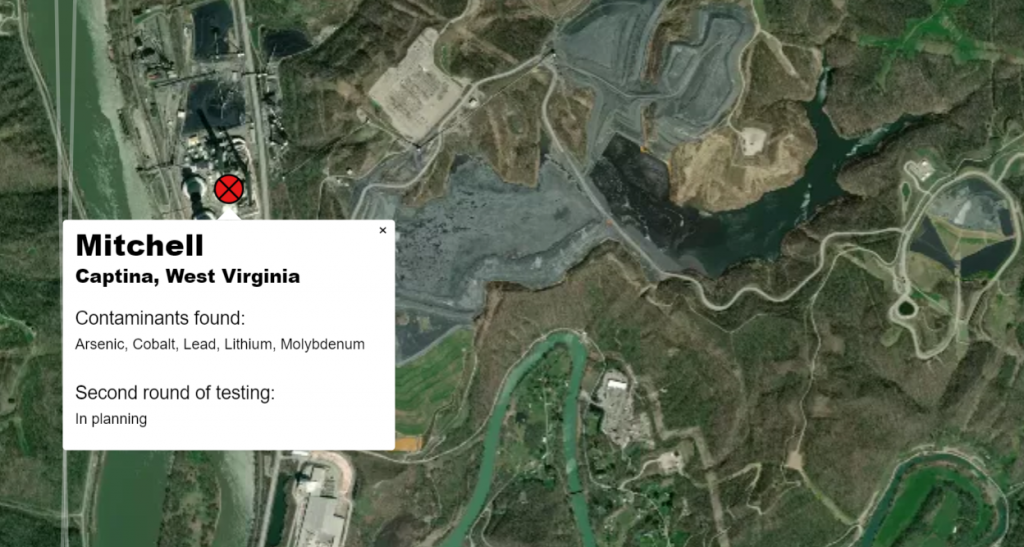News
West Virginia Coal Plants Need Upgrades. Three States Will Decide Their Fate.
By: Curtis Tate | Ohio Valley ReSource
Posted on:
They’ve towered over the region’s communities for decades. They generated the electricity for homes around the Ohio Valley. They burned coal, a fossil fuel Appalachia has in abundance.
But three West Virginia coal-fired power plants owned by Ohio-based American Electric Power may be on borrowed time.
The Mitchell Plant in Moundsville, the Mountaineer Plant in New Haven, and the John Amos Plant in Winfield require costly upgrades to comply with new federal environmental rules.
AEP subsidiaries Wheeling Power and Appalachian Power have asked the state Public Service Commission to approve $317 million to pay for the retrofits to keep the plants operating until 2040. Utility customers in West Virginia, Virginia and Kentucky would pay for the cost.
Power plant workers, coal miners, trade associations, and state and local officials have pleaded with the commission to approve the work.
Last week, they testified overwhelmingly in support of the plants in a public comment hearing.

It may not be that simple, however. Electric utilities have already closed coal-fired power plants nationwide in favor of cheaper, abundant natural gas produced through hydraulic fracturing.
They’ve also embraced renewables. The cost of wind and solar have plummeted in recent years. Even the coal-friendly West Virginia legislature approved two bills in the past two sessions to encourage the development of solar power in the state.
West Virginia’s power plants are a source of electricity, jobs and tax revenue. The state relies on coal to fuel them almost more than any other state. Yet these power plants are vulnerable to the same economic forces that have swept through the industry nationwide in the past decade.
More coal-fired power plants face closure as the nation transitions to cleaner sources of energy. Coal is falling out of favor to lower-carbon or no-carbon sources of electric power in an effort to curb greenhouse gas emissions and slow climate change.
The fate of the Mitchell, Mountaineer and Amos plants rests principally in the hands of the commissioners in West Virginia, who will decide whether the state’s utility customers will pay more to keep them operating into the next decade.
Closing Time?
If the commission denies the request to upgrade the three plants, they would close in 2028. However, there’s no guarantee all three plants would continue operating another 12 years or beyond that if the commission approves the request.
“Those plants may not run until 2040,” said Dori Jaffe, a managing attorney for the Sierra Club. “They’re already old, the costs are going to continue to rise, clean energy is going to continue to decrease in prices. That’s what we’re seeing. That’s the trajectory.”

The turn away from coal is part of AEP’s long-term strategy. The company has 5,665 megawatts of renewable energy projects in progress. It plans to retire 5,574 megawatts of coal generation from now through 2030. One megawatt is enough to power roughly 50,000 homes.
AEP and other power plant operators are retiring coal-fired plants in the region. The Tennessee Valley Authority shuttered the Paradise Fossil Plant in Western Kentucky, in spite of pressure from Kentucky’s then-Gov. Matt Bevin and former President Donald Trump.
In Kentucky, Louisville Gas & Electric and Kentucky Utilities, a PPL subsidiary, plans to close two coal-fired units near Louisville, and a third near Burgin, in Central Kentucky, by 2028.
Last year, AEP shut down the Conesville Plant in Coshocton, in Eastern Ohio.
AEP plans to close its 2,600-megawatt Rockport Plant in southern Indiana by 2028.
New Rules
All three West Virginia plants must comply with the U.S. Environmental Protection Agency’s rules for the disposal of ash from burning the coal and the wastewater generated by the plants. The plants must be in compliance to operate beyond 2028.
Coal ash disposal sites around the region pose environmental and health risks.
A 2018 investigation by the Ohio Valley ReSource and partner station WFPL found several ash sites are leaking potentially hazardous chemicals into groundwater.

The rules require utility companies to perform the work or close the plants.
That’s a risky investment considering the deteriorating economics of coal, said James Van Nostrand, who teaches law at West Virginia University and directs its Center for Energy and Sustainable Development.
“We’re going to have additional hundreds of million dollars of investment that’s going to be stranded and have to be paid for by the ratepayers,” he said.
Because the power generated by the plants supplies other states, AEP is seeking approval for the plan from the state public service commissions in Kentucky and Virginia.
Both states’ commissions will consider AEP’s proposal later this month.

“It is possible that West Virginia customers could have to cover the costs of the entire retrofits for all three plants,” she said.
In its written testimony, AEP says the upgrades are economically justified for the Amos and Mountaineer plants and close to neutral for the Mitchell Plant.
An economic analysis by the Sierra Club comes to a different conclusion: closing the plants could save ratepayers hundreds of millions of dollars.
Closing the Amos plant alone in 2028 could save $1.4 billion, the Sierra Club’s analysis found. Closing the Mitchell plant in 2028 would save $118 million, it found.
Carbon Capture
The big game changer, however, could be a tax on carbon.
A carbon tax puts a price on climate-changing greenhouse emissions, encouraging a shift toward cleaner energy. The Congressional Budget Office estimates a $25 a ton carbon tax, indexed to inflation, could raise $1 trillion over a decade.
With a carbon tax, the Sierra Club projects that utility customers could save $2.4 billion if Amos closed in 2028; $1.5 billion if Amos and Mountaineer closed and $350 million if Mitchell closed.
Whether they close in 2028, 2040 or sometime between, the three plants will leave a void in the surrounding communities.

A report by West Virginia University’s Bureau of Business and Economic Research estimated the state’s power plants account for $4.8 billion in direct output, $725 million in wages and $97.3 million tax in revenue. They also support, directly and indirectly, 6,600 jobs.
“None of us take that lightly,” Jaffe said. “But I think everybody knows that those plants are closing at some point.”
Coal produced 40% of the nation’s electricity a decade ago, compared with 20% in 2020. Natural gas toppled coal as the nation’s top electricity source about five years ago, and renewables have caught up.
Coal-fired plants also produce less power than they’re capable of generating. The capacity factor of coal plants — the percentage of power they produce relative to their maximum output — dropped from 62% in 2011 to 40% last year. The lower output means fewer workers, from the mines to the power plants.
Moody’s Investors Service forecast in 2019 that coal would be only 11% of electric power generation by 2030. Last year, Morgan Stanley went further and predicted there would be no coal producing electricity by 2033. That’s seven years before the three West Virginia plants would close if utility customers pay for their upgrades.
Van Nostrand said utility customers and communities would be better off if AEP scrapped the upgrades and redirected the money toward the transition to renewable energy.
“It’s just it’s the money would be so much better spent on going down a clean energy path that would produce more jobs and put more money in the pockets of ratepayers,” he said.
The Ohio Valley ReSource gets support from the Corporation for Public Broadcasting and our partner stations.

